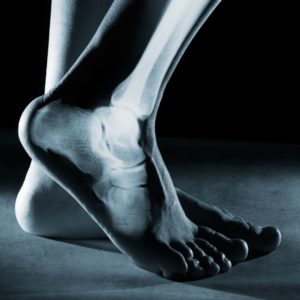 We often have some sort of pain on the bottom of one of our feet. It could be from a bruise or simply fatigue after a 10-mile hike in the Uintas. But when the pain is ongoing and typically worse in the morning when you first awake, it’s more likely plantar fasciitis, probably the most common cause of foot pain.
We often have some sort of pain on the bottom of one of our feet. It could be from a bruise or simply fatigue after a 10-mile hike in the Uintas. But when the pain is ongoing and typically worse in the morning when you first awake, it’s more likely plantar fasciitis, probably the most common cause of foot pain.
Since we deal with this problem all the time at our five Foot & Ankle Clinics of Utah offices, let’s spend this last blog before summer explaining the pain and what we can do about it.
What is plantar fasciitis?
Plantar fasciitis causes pain in the bottom of the heel. The condition is named, aptly, for the plantar fascia, the thick, weblike ligament that connects the heel of the foot to the front of the foot. This ligament supports the arch of the foot and acts as a shock absorber. Due to their location, the plantar fascia ligaments on both feet experience a lot of wear and tear in our daily walking lives. When we put too much pressure on our feet this can damage or tear the plantar fascia. This creates inflammation, which shows itself in heel pain and stiffness.
What causes plantar fasciitis?
The exact causes of this painful condition aren’t fully understood. Research seems to be pointing to degeneration of the ligaments rather than inflammation. Active people between the ages of 40 and 70 are the typical patients with plantar fasciitis. It’s more common in women than men. Pregnancy can cause bouts of plantar fasciitis, but these usually resolve after delivery at the latest. Obesity creates greater risk, as the person is placing more pressure on their plantar fascia. Most distance runners have bouts of plantar fasciitis at some point in their running lives. People who are on their feet all the time for their jobs are also at a higher risk. Wearing shoes with little or no arch support can result in plantar fasciitis.
Congenital causes also play a part. If you have very high arches or very flat feet, you have higher risk of plantar fasciitis. The same is true if your Achilles tendons are overly tight.
Treatment
A variety of non-surgical treatments are usually effective in addressing plantar fasciitis. These range from rolling your foot over a cold water bottle or ice for 20 minutes three or four times a day to taking nonsteroidal anti-inflammatory medication.
Stretching your calves and plantar fascia is the most effective way to relieve the pain.
- Calf stretch — Lean forward against a wall with one knee straight and the heel on the ground. Place the other leg in front, with the knee bent. To stretch the calf muscles and the heel cord, push your hips toward the wall in a controlled fashion and hold this for 10 seconds. Repeat this 20 times for each foot.
- Plantar fascia stretch — In a seated position, cross your affected foot over the knee of your other leg. Grasp the toes of your painful foot and slowly pull them toward you in a controlled fashion. Place your other hand along the plantar fascia. The fascia should feel like a tight band along the bottom of your foot when stretched. Hold the stretch for 10 seconds. Repeat this 20 times for each foot.
Our four podiatrists at Foot & Ankle Clinics may opt to give you a corticosteroid injection if stretching options don’t help your pain. This is injected directly into the damaged section of your ligament. We may use ultrasound to plot the best injection site.
If none of these options help, surgery could be considered. This would involve a procedure known as plantar fascia release. This isn’t usually necessary.
If you have pain on the bottom of your foot, it could be plantar fasciitis. Give us a call at any of our five locations in American Fork (801), 763-3885; Payson, (801) 765-1718; Springville (801) 491-3668; and Orem (two locations, (801) 226-2421 or (801) 765-1718).

